Brian Meert's Blog, page 85
April 12, 2019
Low Customer Feedback Score on Facebook? Here’s How to Fix It

April 12, 2019
Anna Hubbel, writer at AdvertiseMint, Facebook ads agency
 Mat Brown / Pexels
Mat Brown / PexelsFacebook’s customer feedback score, measured on a scale of one to five, is a satisfaction score provided by customers who bought products from your Facebook ad. A low feedback score (between one and two) indicates a lot of dissatisfaction with your products. Facebook looks at your score and, if it’s low, will subsequently penalize your business by diminishing your ad’s reach. In other words, you pay more for low reach. If your score falls to one or below, Facebook will prevent you from running ads on any of its platforms.
You’d hate to see your customer feedback score plummet. A low feedback score negatively impacts your ad’s performance on the platform, ultimately hurting your campaign. Fortunately, you can prevent or even change a low score by following these recommendations.
Clearly Convey What You’re Offering
Your ad creatives should always accurately represent what you’re selling. That includes pictures, videos, and any other creatives used in your ad. Dimensions, sizes, materials, and all other product information presented in your ad should match the advertised item and should under no circumstance be altered or exaggerated. If you’re selling clothing, the size charts you use should include measurements for each country you’re selling to. For example, if you sell to the United States and China, you should include sizes for each country in your chart.
In cases where you source goods from suppliers, be wary of quality control. Ensure that goods are shipped on time and match the descriptions on your website and in all ads.
Accurately Communicate Shipping Time
Do not make promises you can’t keep. Set realistic and accurate shipping expectations. When providing shipping information, include processing times, item availability, shipping costs, and any other pertinent information that could affect shipping time. If you can, also supply tracking information so the customer can see the package’s location.
Meet Customer Service Expectations
Return and exchange policies exist for a reason. Follow through with all of your policies as they appear on your business’s website. When customers submit an inquiry, they should receive a clear message on your website regarding how long they can receive a reply, accounting for any time zone differences that may affect response time.
Monitor Customer Demand
You shouldn’t be pushing extra advertising for products that are low in inventory; otherwise, when a customer purchases the product promoted in your ad, you may not be able to deliver it because it’s out of stock. Scale your advertising with your product inventory. You can also tell customers that you are currently out of stock then give them a realistic timeline of when the product will be restocked and shipped. Proactively inform customers whenever you are unable to meet their demands.
Don’t let a low customer feedback score affect your campaign performance. Visit your feedback dashboard regularly to keep a close eye on your score. If you go above and beyond to deliver only positive customer experiences, you will get the score you deserve.
By Anna Hubbel, writer at
AdvertiseMint, best Facebook advertising agency
The post Low Customer Feedback Score on Facebook? Here’s How to Fix It appeared first on AdvertiseMint.
April 11, 2019
8 Books for Industry-Leading Facebook Advertisers

April 11, 2019
Nicole Frost, writer at Advertisemint, facebook advertising agency
 Perfecto Capucine / Pexels
Perfecto Capucine / PexelsFacebook has more users than any other social media website, making it one of the best places to promote your business. But, with more than 90 million business pages, advertisers need to stay ahead of the curve if they want their brands to stand out. Here are eight books that will teach you everything you need to know about creating a stellar Facebook advertising campaign.
1. Ogilvy on Advertising in the Digital Age
Miles Young, chairman of Ogilvy and Mather, breaks down what it means to create advertisements for digital consumption, as well as how to bridge the gap between design for digital and print mediums.
2. The Complete Guide to Facebook Advertising
In this comprehensive guide, Brian Meert explains how to take advantage of Facebook’s 2.3 million monthly active users and how to grow your brand by effectively targeting and connecting with your audience. Because this book contains step-by-step instructions and screenshots on how to create ads, it’s best suited for advertisers new to Facebook advertising.
3. Advertising Concept and Copy
Creativity is the key to a successful advertising campaign. This book explains how you can develop a strategy to build modern, meaningful ads that attract clicks.
4. Jab, Jab, Jab, Right Hook
If your main goal is to stay ahead of the competition, this book will show you exactly how to become a leader in your industry. Social media expert Gary Vaynerchuk explains how a killer “right hook” can take down your competitors and how this age-old advertising strategy has evolved for online platforms.
5. Phrases That Sell
Industry experts Edward Werz and Sally Germain give readers more than 5,000 sales phrases and discuss how to use them to create a captivating hook that will bring in customers.
6. How to Write Copy That Sells
In the same vein as the fifth entry on this list, this book will teach you how to write exceptional copy without the standard “salesy” clichés that have been used to death by advertisers throughout the years.
7. Ultimate Guide to Facebook Advertising: How to Access 1 Billion Potential Customer in 10 Minutes
Facebook is a powerhouse for brand visibility, but a targeted approach is the best way to connect to your audience. This book explains exactly how to convert Facebook users into lifelong customers in just a matter of minutes.
8. Give: The Ultimate Guide to Using Facebook Advertising to Generate More Leads, More Clients, and Massive ROI
World-renowned Facebook marketer Nicholas Kusmich breaks down his four-step process to effectively forging and retaining meaningful customer relationships by focusing on input rather than return.
An advertising tool is only as effective as the content it’s promoting, so pick up a book from this list to optimize your next Facebook campaign.
Written by Nicole Frost, writer at AdvertiseMint, best facebook advertising agency
The post 8 Books for Industry-Leading Facebook Advertisers appeared first on AdvertiseMint.
Brands Can Now Better Fight Counterfeits with Amazon Project Zero

April 11, 2019
Anna Hubbel, writer at AdvertiseMint, Facebook ads agency
 Image Courtesy of Amazon
Image Courtesy of AmazonThey say imitation is the sincerest form of flattery, but brands would agree that this philosophy does not stand with counterfeit products. Fortunately, Amazon recently introduced Project Zero, a program that helps businesses fight counterfeits.
Using advanced technology, machine learning, innovation, and property information supplied by brands, Project Zero detects counterfeits before they reach the customer. According to Amazon’s announcement of the program, Project Zero consists of three new tools to make this possible.
Automated Protections
This tool uses Amazon’s machine learning to perform a continuous automated scan of the platform’s stores to identify and remove any detected counterfeits. The scan uses information provided by brands such as logos, trademarks, and other brand data to inform its search of more than five billion daily product listings.
“We’ve been testing these automated protections with a number of brands, and on average, our automated protections proactively stop 100 times more suspected counterfeit products as compared to what we reactively remove based on reports from brands,” Amazon says in its description of the tool.
Self-Service Counterfeit Removal Tool
With this new tool, brands now have the ability to remove counterfeits themselves without contacting Amazon. If a brand identifies a counterfeit of its product, it can easily remove it if Amazon’s scan somehow missed it.
“This information also feeds into our automated protections so we can better catch potential counterfeit listings proactively in the future,” says Amazon.
Product Serialization
As an extra precautionary measure to prevent counterfeits from reaching customers, the product serialization service gives every manufactured unit a unique code. Brands include these codes on their products so that Amazon can scan and verify whether a product is authentic or counterfeit.
“With this product serialization service, we can now detect and stop counterfeiting for every product unit before it reaches a customer,” says Amazon.
So far, the feedback Amazon has received about Project Zero has been positive.
“Project Zero, with its automated protections and the self-service removal of counterfeit products, is a significant development that will help ensure our customers receive authentic Vera Bradley products from Amazon,” says Mark Dely, chief legal and administrator officer at Vera Bradley in Amazon’s blog post about the announcement.
Like Dely, CEO and founder of Thunderworks Phil Blizzard also sees value in the new program.
“When we were offered the opportunity to enroll in Amazon Project Zero, we jumped on it. Every unit we sell through Amazon has a unique, serialized barcode, and our counterfeit problem has nearly disappeared in the United States,” says Blizzard in the same Amazon blog post.
Amazon says at this time, Project Zero is “an invite-only experience.” Interested brands can learn more and sign up to join the program.
By Anna Hubbel, writer at AdvertiseMint, best Facebook advertising agency
The post Brands Can Now Better Fight Counterfeits with Amazon Project Zero appeared first on AdvertiseMint.
5 Tips That Will Help Increase CTRs for Your Facebook Carousel Ads

April 11, 2019
Anna Hubbel, writer at AdvertiseMint, Facebook ads agency

Facebook’s Carousel Ads offer a creative format for engaging your audience with multiple images. However, to generate high click-through rates (CTRs), you need to pull your creative weight; Facebook doesn’t do all the work for you.
It all starts with what you want to accomplish with your Carousel Ad. What is the main message you want to convey? Once you’ve determined that, you can use the following tips to help increase your ads’ CTRs.
Create a How-To Demonstration
Use your Carousel cards to create a how-to demonstration. Show your audience how to use your product. Each card can represent a step. One card will have step one, the second card will have step two, and so on. For example, if you’re promoting a curling iron, the first card might show how you would clip a strand of hair, followed by a second card that shows how to roll the iron, and a final card showing the end result.
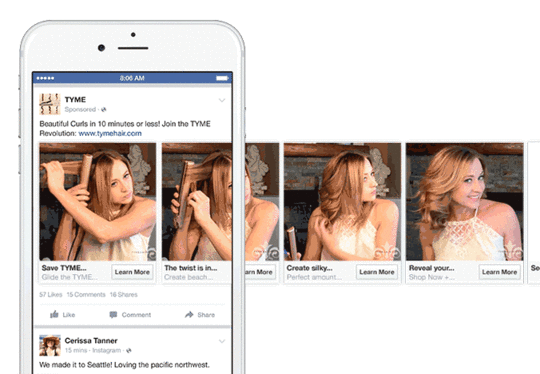 Courtesy of Facebook
Courtesy of FacebookCreate a Story
Carousel Ads are a great storytelling format. Use the cards to tell a story about your product or service. One Carousel card will show one scene, the second will show another, and then the third another.
For example, Mini told a story with Carousel cards by creating a virtual tour of the Mini Hardtop 4 Door. The first card shows the outside of the vehicle, and then each following card takes the viewer to different places inside the vehicle.
 Image Courtesy of Facebook
Image Courtesy of FacebookInclude Relevant Images
All the images you include in your Carousel cards should be relevant to the offer you are promoting. If you are promoting shoes and handbags, show your popular items on each Carousel card.
 Image Courtesy of Facebook
Image Courtesy of FacebookUse All Ad Elements
Take advantage of all the ad elements available for your Carousel Ad to add context and persuade your audience to click. For example, include relevant headlines, descriptions, and call-to-action buttons in your ad. This will give your audience extra information that interests them.
Keep in Mind Audience Relevance
If your ad isn’t relevant to the people you’re targeting, those people won’t click on it. For example, if you’re trying to get more gen Zs and millennials to buy your designer sunglasses, don’t use images of senior citizens wearing your products in your Carousel cards. Use images of gen Zs and millennials wearing them.
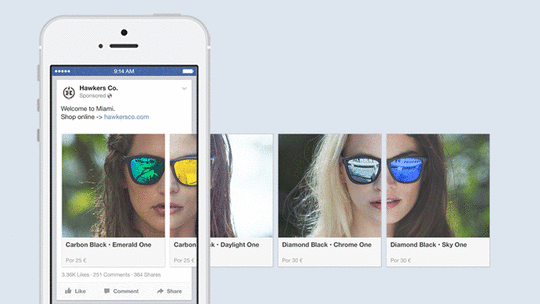 Courtesy of Facebook
Courtesy of FacebookMake your Carousel Ads work for you with these five tips in mind. Your click-through rates will thank you.
By Anna Hubbel, writer at
AdvertiseMint, best Facebook advertising agency
The post 5 Tips That Will Help Increase CTRs for Your Facebook Carousel Ads appeared first on AdvertiseMint.
April 10, 2019
How to Create Social Media Ads That Influence Young Parents to Buy

April 10, 2019
Anna Hubbel, writer at AdvertiseMint, Facebook ads agency
 Image Courtesy of Pexels
Image Courtesy of PexelsWhen you’re a young parent, the pressure is on to buy just the right products for your family, whether they be toys for the children, houseware for the home, or meal delivery services for the kitchen. It comes as no surprise that young parents often turn to social media to research products and brands.
According to marketing analyst company Emarketer, 21.7 percent of mothers and 12.1 percent of fathers, according to an MRI Simmons study, are more likely to purchase products they see advertised on social media, compared to only 13 percent of all adults. Young parents in particular are more likely to find online advertising useful because they use and trust digital media, compared to older adults who may use it less. So how can you, as an advertiser, influence young parents to buy your products? Here are three tips to keep in mind when you’re trying to reach young parents.
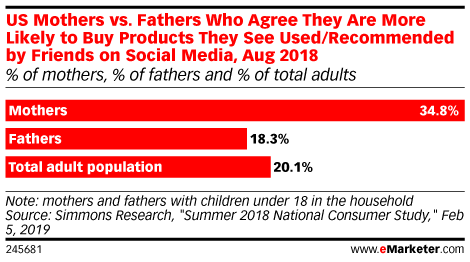 Image Courtesy of Emarketer
Image Courtesy of EmarketerFeature Reviews and Recommendations on Ads
According to Emarketer, 27.4 percent of parents, on average, are more likely to buy products they see used or recommended by friends on social sites. Since young parents trust their friends’ recommendations, they are also likely to trust reviews and recommendations by other young adults when researching products. Highlight the positive testimonials customers have made about the items you’re advertising so parents can immediately see why your brand is the right choice for them.
Create Informational Ads
Emarketer also reveals in its study that 44.7 percent of mothers and 36.4 percent of fathers refer to online advertising to learn more about different products a company offers. Similarly, a September 2018 survey showed that 59 percent of mothers and 67 percent of fathers consider online ads informative about new products.
Young parents primarily refer to online ads for research. Make it easier for them to learn about your product by creating informational ads. Describe what the product is, what it can be used for, how much it is, and why it’s a good buy.
Have a Strong Online Presence
If parents are going to be doing product research, you want it to be easy for them to find your business. To do this, establish a strong online presence by remaining active on prominent social media sites like Facebook and Instagram, as well as popular review sites like Yelp. Share up-to-date content and information on each account, making it easier for parents to come across your brand or product during their search.
If you want to reach young parents, make your digital ads useful. Essentially, you should think like a parent. What would you like to know before you buy?
By Anna Hubbel, writer at
AdvertiseMint, best Facebook advertising agency
The post How to Create Social Media Ads That Influence Young Parents to Buy appeared first on AdvertiseMint.
Snapchat Stories Are Coming to Tinder, Houseparty, and More Apps

April 10, 2019
Anne Felicitas, editor at AdvertiseMint, Facebook advertising agency
 Pixabay / Pexels
Pixabay / PexelsMany social media companies are busy making changes this year. While some are hard at work improving privacy (in the case of Facebook) or curbing spam activity (in the case of Instagram and Twitter) on its platforms, one social media app is still struggling to compete with rivals in ad revenue and user base.
Although Snap has been scandal-free, it has been plagued by lackluster earnings reports, failing to impress investors with its slow-growing active users and advertising program. During its partner summit in Hollywood, Snapchat announced changes that might turn things around.
According to The Verge, Snap is expanding Snapchat Stories to Tinder and Houseparty. Currently, those companies are the only two that will have Snapchat Stories in their apps, but not for long. Stories will soon be available to more developers.
The integration allows users to insert their Stories to other apps. For example, users will soon be able to add their Snapchat posts to their Tinder and Houseparty profiles. This integration is similar to how users can post their Instagram Stories and posts to Facebook.
According to The Verge, advertising will not be included when the integration launches, but if there’s anything we should learn from social media companies’ histories, it’s that nearly every product launch is usually followed by monetization. Stories ads rolled out after Instagram Stories, video ads after Facebook Watch, Messenger ads after standalone app Messenger, and, possibly, video ads after IGTV.
Stories isn’t the only Snapchat product that will migrate to other apps. Bitmoji, too, is coming to Fitbit and Venmo soon.
Snap is also pushing for other integrations, including Anchor, GoFundMe, and Netflix. For the latter integration, users will be able to share the shows they’re streaming to their Snapchat profiles. (This is similar to Netflix’s integration with Instagram.)
The other exciting change Snap will roll out later this year is its Snap Audience Network, a service that will extend advertising to other apps, similar to Facebook’s Audience Network.
Snap is making a slew of changes this year, none of which are novel. Many social media companies have integrations similar to the ones Snap is developing, but perhaps Snap is finally taking a page from Facebook’s strategy book: copy the enemy.
Written by Anne Felicitas, editor at AdvertiseMint, Facebook advertising agency
The post Snapchat Stories Are Coming to Tinder, Houseparty, and More Apps appeared first on AdvertiseMint.
April 9, 2019
Key Insights About Mobile Web and Mobile App Shopping

April 9, 2019
Anna Hubbel, writer at AdvertiseMint, Facebook ads agency

Every marketer knows that the best way to reach an audience is through mobile. But which is better, mobile web or mobile app? Where do users spend more time and where are they more likely to make purchases?
According to a report by marketing analyst company Emarketer, total worldwide app revenues grew 63 percent year over year in 2018. App analytics platform App Annie also reported an increase to 18 billion hours in global time spent in shopping apps on Android devices. That’s a 45 percent jump from two years ago.
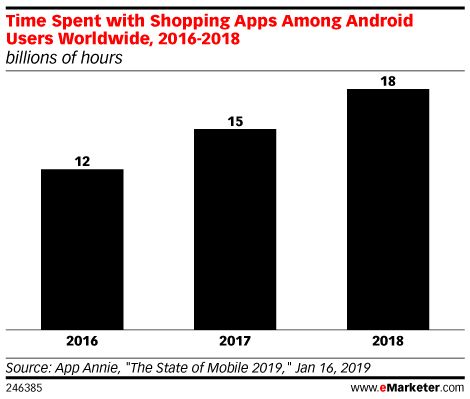 Image Courtesy of Emarketer
Image Courtesy of EmarketerIn terms of mobile shopping overall, Emarketer says November 2018 accounted for the most time spent on mobile shopping ever. Additionally, sessions grew 65 percent worldwide from 2016 on Android. Mobile shopping sessions in the US grew 70 percent since 2016.
For a clearer picture of mobile shopping, Emarketer looks at Amazon’s app, which ranked third for number of monthly active users in 2018 for both iPhone and Android. Amazon was the only retailer included in the top 10 list of US apps. According to Emarketer, in 2018, Amazon’s mobile web audience was actually larger than that of the retailer’s app, with an average of 152 million unique monthly users. The app only averaged 112 million unique monthly users.
But what the Amazon app lacked in monthly users it made up for in engagement levels. Emarketer reports 85 percent of time spent on the app compared to only 15 percent spent on mobile web.
US consumers’ time spent in shopping apps has a strong positive correlation with increasing digital sales, according to App Annie. The correlation recorded between Q1 2014 and Q3 2018 was 0.97. This indicates that user experience has a strong influence on digital success.
“We forecast that US retail [mobile commerce] sales will reach $268.78 billion in 2019, up nearly 30 percent year over year,” predicts Emarketer. “By 2020, that figure will increase to $338.02 billion and account for nearly half of total US retail ecommerce sales.”
Retailers are getting better at encouraging mobile conversion, says Emarketer. As long as they continue improving their marketing tactics, they can drive successful mobile commerce results.
“Retailers must activate every phase of the marketing funnel to maximize customer lifetime value,” says Emarketer principal analyst Andrew Lipsman. “They can do so by using tactics such as explicitly communicating the value of their app, targeting the right customers through relevant channels, and directly incentivizing downloads, usage, and transactions with compelling discounts and promotions.”
By Anna Hubbel, writer at
AdvertiseMint, best Facebook advertising agency
The post Key Insights About Mobile Web and Mobile App Shopping appeared first on AdvertiseMint.
Related Post
Facebook’s Moments App Now Supports Video
Facebook Wants to Sell Offsite Ads
Facebook Now Allows Videos in All Five Carousel Ad...
Snapchat Opens API, Prepares for an Advertising Go...
Enforcing New Rule, Twitter Limits the Number of Accounts Users Can Follow

April 9, 2019
Anne Felicitas, editor at AdvertiseMint, Facebook advertising agency
 Marten Bjork / Unsplash
Marten Bjork / Unsplash Buying followers is a controversial topic among social media marketers. While one side sees it as a necessary evil needed to bolster the online presence of smaller brands, one side sees it as a ruinous tactic that tarnishes the reputation and credibility of brands, both big and small. With opinions divided, Twitter’s next move against spam activity will likely receive praise from some and silent disapproval from others.
Recently Twitter announced that it is limiting the number of accounts users can follow from 1,000 per day to 400 per day. This new rule curbs spam activity within the platform, specifically targeting companies that sell fake followers. These companies create and unleash bots that mass follow hundreds of accounts, hoping that those accounts would follow back. The bots then unfollow the accounts that don’t reciprocate, a common behavior Twitter accurately captures in its post announcing the new rule.
 Twitter announces new follow rule on its Twitter Safety account.
Twitter announces new follow rule on its Twitter Safety account. “Follow, unfollow, follow, unfollow. Who does that? Spammers,” said the Twitter Safety account’s post on Monday morning.
Many have questioned Twitter’s decision to set the limit at 400, a number that is still unusually large. No regular user has the time or the capacity to follow 400 accounts in one day.
“It took me approximately seven years to follow 400 people,” replied one user to Twitter’s announcement.
 One user mocks Twitter’s cap number.
One user mocks Twitter’s cap number. After observing follow behavior, Twitter concluded that 400 is a reasonable cap.
“We looked at follow behavior at various thresholds, and selected 400 as a reasonable limit that stopped most spam while not affecting legitimate users,” a spokesperson said to Tech Crunch, which also reported on Twitter’s new rule.
This is only one among the many efforts Twitter has made to eliminate spam activity. Last summer, Twitter mass deleted bots from users’ followers list, heavily affecting large celebrity accounts from people such as Katy Perry, Lady Gaga, and, ironically, Twitter’s primary account, whose followers dropped from 62.85 million to 55.1 million.
The problem of spam activity isn’t unique to twitter. Instagram, too, has been taking measures. Back in November, the social media company announced that it was stripping accounts of fake likes and follows purchased from third-party apps. It has also quietly added UTM variables to users’ post URLs, a move that targets engagement groups where users can post content from Instagram to receive fake likes and comments.
Twitter’s new rule shouldn’t be a disruptive change to users’ activities…unless, of course, they’re among those who employ spam bots to collect followers on their behalf.
Written by Anne Felicitas, editor at AdvertiseMint, Facebook advertising agency
The post Enforcing New Rule, Twitter Limits the Number of Accounts Users Can Follow appeared first on AdvertiseMint.
Related Post
Facebook Is the Leader of App Advertising
How To Install Pixel Perfect to Shopify
Facebook Releases Flash, the Snapchat Clone
Instagram Stories Now Features Links, Mentions, an...
More Advertisers Are Spending on Reddit, Boosting the Platform’s Ad Revenue

April 9, 2019
Anna Hubbel, writer at AdvertiseMint, Facebook ads agency
 Con Karampelas / Unsplash
Con Karampelas / UnsplashReddit’s ad business is looking good, according to marketing analyst Emarketer. It’s going to keep getting better if advertisers are willing to look pass the controversial content frequently shared on the site. In a recent report, Emarketer predicted that the social blog’s ad business will grow 55 percent in 2019, crossing a $100 million milestone. If that trend remains consistent, Reddit’s ad revenues will more than double by 2021, reaching $261.7 million.
With expected net US revenues to reach $119 million this year, Reddit’s ad business will account for a 0.1 percent share of the US digital ad market, reports Emarketer.
“The company has retooled its ad offerings over the past year, which included the launch of new ad formats like autoplay in-stream video, cost-per-click, app install and ‘Top Post Takeover,’ which allows brands to have their ads appear on the site’s front page,” Emarketer forecasting director Monica Peart says in the report. “Like most of the companies for which emarketer produces estimates, advertising is not Reddit’s only source of revenue.”
Reddit came in with its mobile app a little late in the game, which means most of its revenues come from laptops and desktops. However, Emarketer says this year mobile will account for 57 percent ($67.8 million) of revenues.
 Image courtesy of Emarketer
Image courtesy of EmarketerClearly, Reddit’s reputation as a platform for advertising is growing. However, some advertisers are hesitant to cash in on the platform’s booming success in advertising, fearing the controversial content in the site’s forums.
“As a mix of forum and trending news site with a bit of social network, reddit has operated on an ‘open internet’ ethos,” Peart says. “While that has yielded organic growth among a hard-to-reach audience, it has also meant a reality where controversial content is the norm. And in a news climate where missteps can tarnish results, that makes some digital advertisers nervous.”
Reddit’s user growth is much slower than its ad revenue. According to Emarketer, user growth will decrease to single digits this year. About 26.4 million people are on Reddit at least once a month. It should be noted that a visitor does not have to have a Reddit account to use the platform. Anyone can use the platform to read news, watch videos, and discover subreddits. However, only account holders can upvote, downvote, comment on, and post content. Ads on the platform are seen by anyone who visits the platform, account holder or not.
“Reddit’s users are tech-savvy and highly engaged, making them attractive to advertisers,” Peart says. “A large portion are unique users, meaning they don’t use other social platforms. That means advertisers have the potential to reach new audiences in a highly targeted way.”
In any case, Reddit is a platform advertisers should keep tabs on in the social media marketing game.
By Anna Hubbel, writer at AdvertiseMint, best Facebook advertising agency
The post More Advertisers Are Spending on Reddit, Boosting the Platform’s Ad Revenue appeared first on AdvertiseMint.
April 8, 2019
4 Ways to Leverage Facebook Messenger Ads
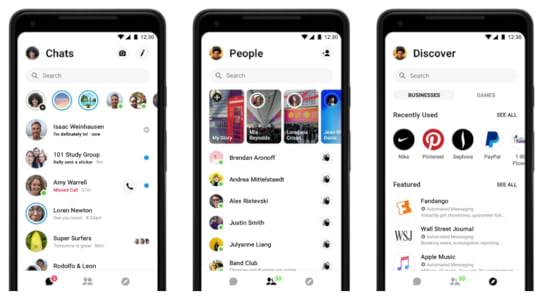
April 8, 2019
Nicole Frost, writer at Advertisemint, facebook advertising agency
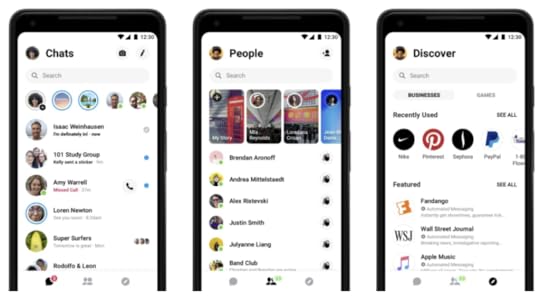 Photo courtesy of messengernews.fb.com
Photo courtesy of messengernews.fb.comIt’s no secret that there are only so many places to effectively show advertisements and marketing content on Facebook. While many advertisers already put their ads on the most popular ad placements Facebook offers (News Feed and Audience Network, for example) Messenger still remains a scarcely used placement with a ton of potential.
Facebook Messenger has 1.3 billion active users who send more than 2 billion messages on a monthly basis. More than half of the participants in an Open Market survey said they would be more likely to contact a business via text instead of phone, and Messenger ads have been proven to increase conversions and drive sales. Messenger is a powerhouse when it comes to instant online communication, and it’s the perfect place to advertise your business. There are a few ways you can leverage Facebook Messenger Ads.
1. Start a Dialogue with Click-to-Messenger Ads
Similar to other sponsored ads, Click-to-Messenger ads appear in users’ news feeds. Instead of containing a link to the company’s landing page or featured product, Click-to-Messenger ads include a “send message” button that opens a conversation on Messenger, giving users an easy way to communicate with your business without calling a customer service number or searching through your website for contact information.
Click-to-Messenger ads can be in the form of videos, still images, or Carousel Ads. If you want to use Messenger Ads, make sure to include a scripted automated message using a chat bot so users will receive a greeting immediately after they click on your ad and arrive to your Messenger conversation. Customer service is key when it comes to customer retention, so you want to be prepared to respond to inquiries in a timely manner.
Click-to-Messenger ads can be placed on Messenger, Facebook, and Instagram, increasing your brand’s reach on several platforms. The ads will appear in the platforms you place them, and once clicked, they will redirect users to your conversation window on Messenger. When creating your Click-to-Messenger Ads, remember that informative ads perform better on Messenger while visually focused ads might attract more attention from Instagram.
2. Get Personal with Sponsored Messages
If you want to reach out to your customers directly, you can send a Sponsored Message to anyone you have previously connected with through your Facebook page. Sponsored Messages perform best with warm leads who have already expressed an interest or who are familiar with your brand. This ad type is especially useful for special offers, limited-time promotions, or services that are tailored to the users you’re targeting.
Users won’t see that the message is sponsored until they open it, so it won’t immediately appear to be an ad. This form of ad placement is seamless, appealing, and informational.
3. Increase Brand Awareness with Messenger Ads
Ads that appear on the app’s home screen are called Messenger ads. These ads function in the same way as Facebook ads, but they are less likely to put off consumers because they don’t clog and disrupt users’ News Feeds and they don’t appear within users’ Messenger conversations. Instead, they appear among users’ already active list of Messenger conversations.
By placing ads within the Messenger app, you’re placing your marketing messages within a platform that is frequently visited and widely used. As aforementioned, Messenger has 1.3 billion active users—that’s 1.3 billion potential customers who can see your ads.
4. Take Advantage of Messenger’s Analytics and Data Capabilities
Messenger ads are ideal for obtaining a ton of information about your audience and, consequently, prospective customers. You can view a variety of different metrics based on who interacts with your ad. Seeing how many impressions your ad receives and who is responding to it can help you develop your marketing strategy moving forward.
Messenger provides valuable insight into your follower base such as time zone, age, and messaging permissions. That, combined with Messenger’s person-to-person environment, makes it the perfect tool for reaching and gaining trust from potential customers.
If you want to increase sales or expand brand awareness, creating meaningful relationships with your target audience is the quickest way to build loyalty and gain exposure for your company. Messenger ads allow you to distribute sponsored content to billions of monthly active users.
Advertising on Messenger gives you the option to target users in three different ways, depending on how many people you want to reach with each post. You can get as personal as you’d like, without taking too much real estate on users’ feeds. For advertising that incorporates visual appeal and straightforward communication, use Messenger to market your business.
Written by Nicole Frost, writer at
AdvertiseMint, best facebook advertising agency
The post 4 Ways to Leverage Facebook Messenger Ads appeared first on AdvertiseMint.



